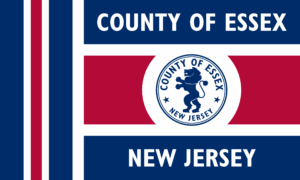Maplewood, NJ: Creative Soul, Progressive Spirit, and the Work of Belonging
In the heart of Essex County, Maplewood, New Jersey is a township where art, activism, and community pride run deep. Known for its leafy streets, thriving arts scene, and commitment to diversity, Maplewood has built a reputation as one of the most progressive suburbs in New Jersey. But with that reputation comes responsibility—to live up to its ideals and ensure that every voice, especially Black and Brown voices, is not just welcomed but centered.
Origin and History
Maplewood’s story is one of transformation—from rural farmland to modern-day cultural hub.
- Indigenous Roots: Originally home to the Lenape people, the area was part of a network of trails and seasonal migration patterns long before colonization.
- Colonial Foundations: Settled by Dutch and English farmers in the 1600s, it remained agricultural through the 1800s.
- Rail Suburb Rise: The arrival of the Morris & Essex rail line turned Maplewood into a commuter haven for professionals working in Newark and New York City.
- Incorporation: Maplewood formally separated from South Orange in 1922, developing a distinct identity as a walkable, arts-forward suburb.
Demographics
Maplewood is often held up as a model of racial and cultural integration—but like many “diverse” suburbs, that narrative is still being written.
- Population: Approximately 25,000 residents (2020 U.S. Census)
- Cultural Makeup: Strong African American and Caribbean populations, along with white, Jewish, Latinx, Asian, and multiracial households.
- Languages Spoken: English is dominant, but Spanish, Haitian Creole, Yoruba, and Korean are heard in homes, schools, and places of worship.
- Family Profile: Many residents are creatives, educators, nonprofit leaders, and progressive professionals who moved here for the schools, the community vibe—and the promise of equity.
Geographic Location and Size
Maplewood offers urban accessibility with a neighborhood feel.
- Size: 3.9 square miles
- Borders: Surrounded by South Orange, Millburn, Union, and Newark.
- Transit Access: The NJ Transit Maplewood Station provides direct service to Penn Station in NYC. Local bus routes also connect residents to Newark and surrounding towns.
Where We Thrive
Maplewood’s culture is built in community centers, school auditoriums, and backyard storytelling.
- South Orange-Maplewood School District (SOMSD): One of the most racially diverse districts in the state. While progress continues, students still push for equity, culturally relevant teaching, and representative staffing.
- Artistic Energy: Maplewood is home to visual artists, musicians, writers, and performers. Local events like Maplewoodstock, Art Walk & Music Fest, and Porchfest showcase the township’s creative pulse.
- Faith and Justice: Churches, temples, and activist groups are deeply engaged in issues like racial justice, LGBTQ+ inclusion, and refugee resettlement.
- Youth Organizing: Students have led powerful movements around curriculum reform, climate justice, mental health, and racial equity in education and town policy.
Fun Facts and Local Gems
- Maplewoodstock: A two-day summer music and arts festival that brings the entire town out to Memorial Park.
- Tuscan Dairy Legacy: The neighborhood of Tuscan is named after the historic Tuscan Dairy Farm, once a key economic driver in the area.
- Words Bookstore: A beloved independent bookstore that prioritizes diverse literature and author events focused on equity and justice.
- Burgdorff Center for the Performing Arts: A creative home for dance, theater, and music performances—many led by local youth.
Challenges and Change
Maplewood’s ideals are strong—but equity is ongoing work.
- School Disparities: Despite diversity, academic tracking and discipline disparities still affect Black and Latinx students disproportionately.
- Housing Pressures: Gentrification and rising home values are pricing out longtime renters and working-class families, especially from the African American community.
- Representation Gaps: While the town celebrates diversity, town boards, parent associations, and civic groups often struggle to reflect the full demographic reality.
- Safety and Policing: Activists have pushed for civilian oversight of policing and more restorative approaches to community safety.
Community Voices
“People love to say Maplewood is diverse—and yes, it is. But diversity is not the same as equity. The work doesn’t stop at who lives here. It’s about who leads, who speaks, and who’s heard.”
— Jamilah R., educator and youth mentor
Why Maplewood Matters
Maplewood is not just a suburb—it’s a stage for possibility. It’s where art meets activism, and where families of color have built homes, led movements, and created beauty in the face of challenge. For HFYC, Maplewood represents both progress and potential. It’s a reminder that even in “model” towns, the work of inclusion, justice, and narrative ownership never ends.
We tell stories from Maplewood because its story isn’t over—and because the people making it deserve to be seen.
Call to Action
Are you from Maplewood? Know a neighbor, youth leader, business owner, or artist pushing culture forward?
Let us help share their story.
Submit a feature, nominate a change maker, or tell us what makes Maplewood home—from the studio to the sidewalk.
